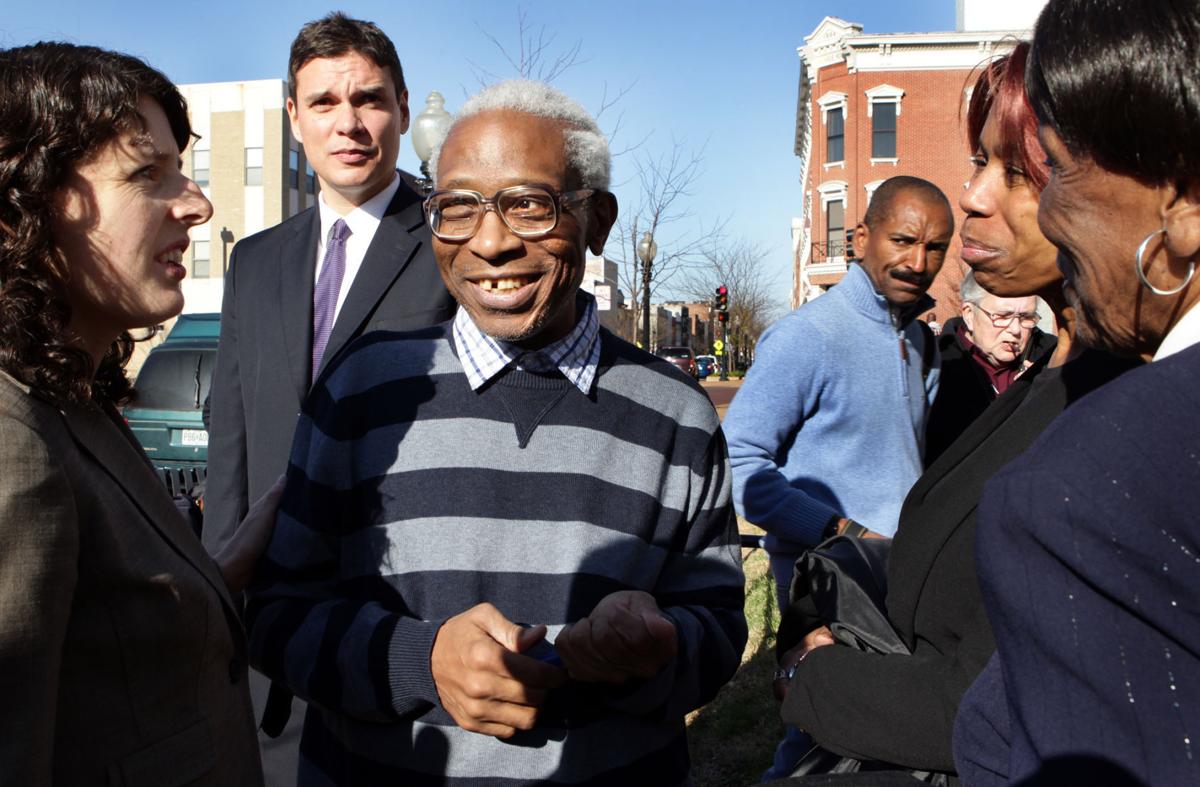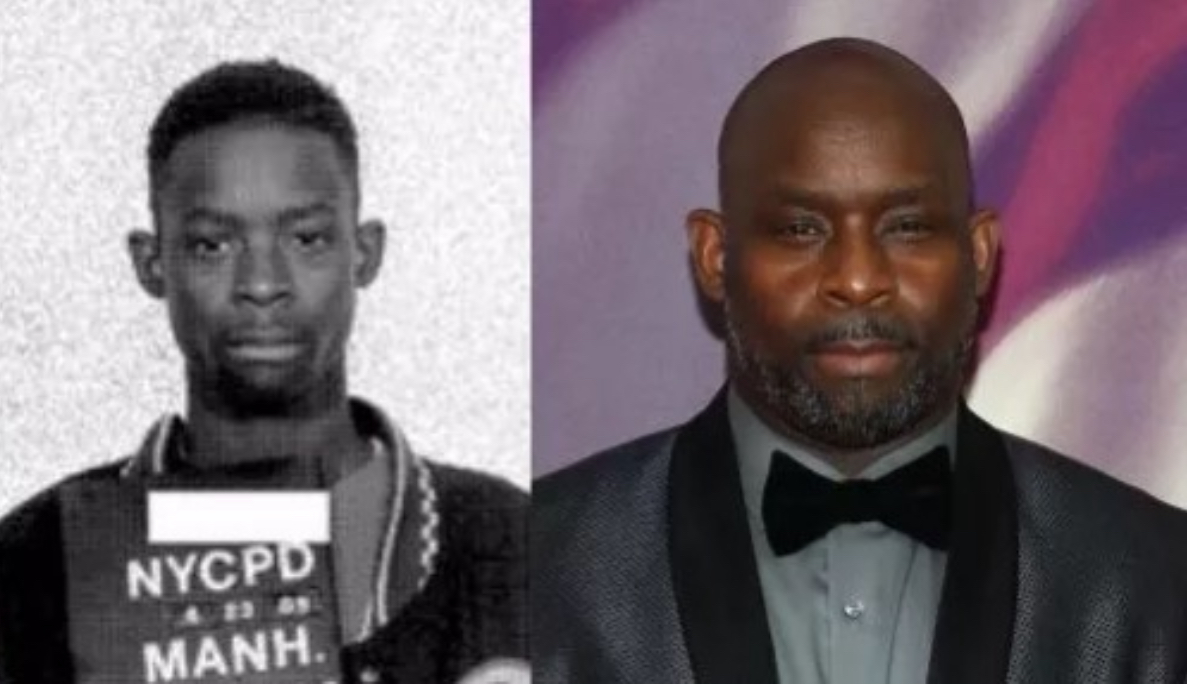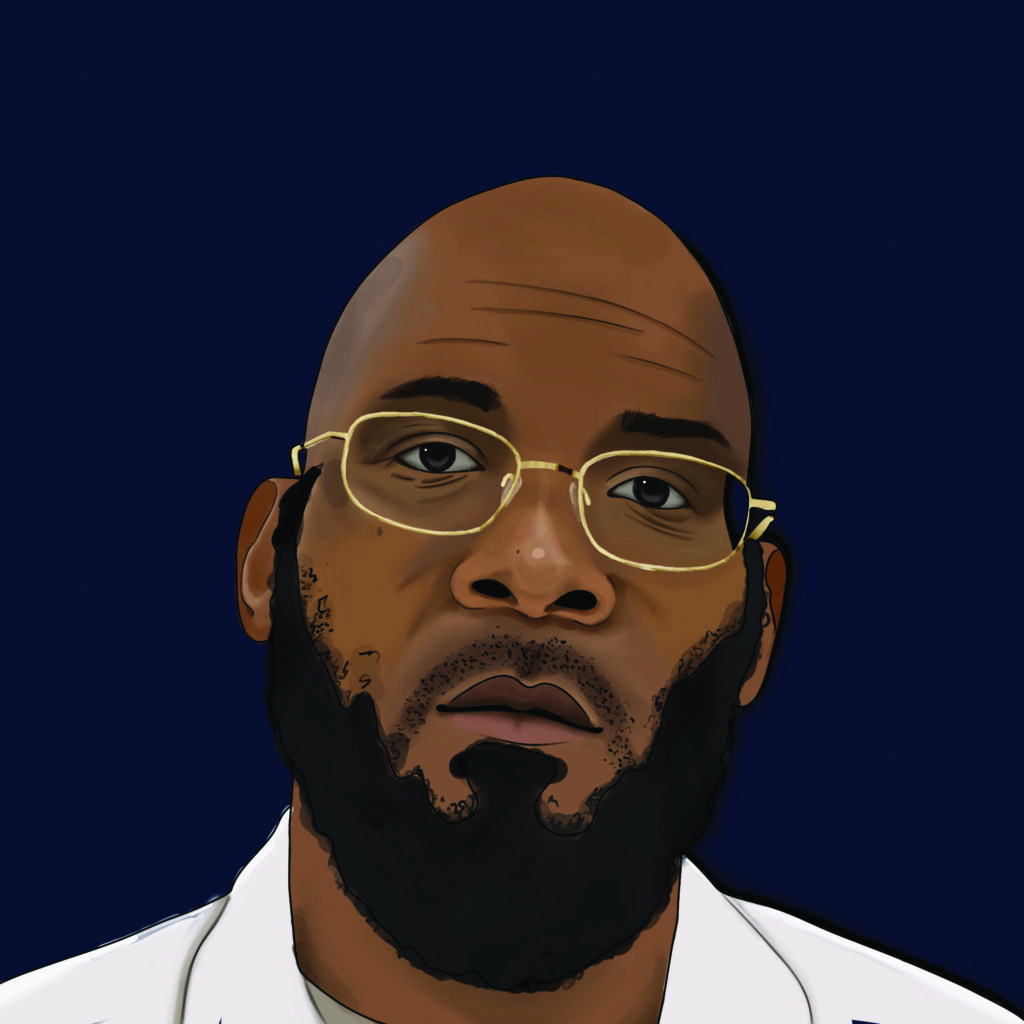Episode Transcript
[00:00:00] Speaker A: Foreign.
[00:00:14] Speaker B: Hey what's up everyone? My name is Ethan and I'm a 9th grade student at Benjamin Franklin School of Finance and it also known as Be Fit. You're listening to a special podcast created by by our class. Each episode tells a true story of someone who was wrongfully convicted and sent to prison for a crime they did not commit. We've been learning about how the justice system works and sometimes how it doesn't. These stories tell deep, real and honestly. Kind of hard to believe, but that's why we're telling them. In this episode we're going to walk you through the story of Steven Avery and you hear what their life was like before the case, what happened after they got arrested, how this is to filled them and what we could learn from it today. Let's get into it.
Steven Navy wasn't famous. He lived in a small town, worked with his family and kept to himself. But sometimes where you're from and how people see you can shape your whole story before it even begins.
[00:01:30] Speaker C: Stephen Avery was born July 9, 1962 who is an American from Manitowoc County, Wisconsin. Stephen grew up in a rural area near Gibson, Wisconsin which was surrounded by dairy farms, corn fields and a family run salvage yard. Although he lived in a 40 acre house with lots of family, Steven wasn't always a bad person but always made some bad decisions. While growing up he had worked at a salvage yard that his family owned. He was having trouble in school academically and had a low IQ. In 1982 he got married and started a family, but he had several legal troubles. He spent his time in jail for burglary and animal cruelty.
[00:02:17] Speaker B: In his earlier years, Stephen Avery was often perceived as different. His mother stated that he went to school for kids who learned more slowly. One of his lawyers later found his school record showing that his IQ was about 70 and that he barely functioned to school. His parents, Dolores and Alan Avery portrayed him as a simple, hard working man who is not socially or intellectually sophisticated and others but was not a bad person. Many others who knew him as Steven Avery.
He was portrayed as a simple man, someone who didn't quite fit into the world around him.
Some thought he was quiet and awkward, also describing him as barbaric.
Some others easily overlooked or underestimated him. According to a judge that reviewed his case, AV saw himself as an impulsive someone who acted out of anger and did not always think before making decisions. Because of this, people decided to judge him harshly during his childhood.
In 1985, a woman was attacked. The town wanted justice Steven became the main suspect even though he had an alibi and there were other leads. So how do end up arrested anyways?
[00:03:35] Speaker A: Stephen Avery at the age of 23 years old in the prime of his life was convinced of sexual assault and attempted murder in in 1985 he was accused of attacking a woman, Penny Bernstein. She said a man grabbed her when she was jogging on the beach and dragged her into a wooded area.
She said she beat her and assaulted her. And though he didn't get the chance to penetrate her, the damage was still done. Now keep in mind the sexual assault was at a notable rise during the time in Wisconsin.
The number of reported sexual assault cases between 1985 and 1986 was was at a 10% rise. This alone indicated the potential rise in reported incidents increasing reporting efforts. A large percentage of those arrested for sexual assault including rape were referred to court. But there were also a lot of them still out there as sex offenders at this time in Wisconsin.
Meaning it really could have been anyone that assaulted Penny Bernstein that.
[00:04:38] Speaker D: The first squad involving Stephen Harry take place in Wisconsin. In 1985 he was accused of sexually assault and attempt murder. The accident occurred near the Two Town rivers. He spent nearly 18 years in prison before being released in 2003. Now the small community surrender. The Two Town become the center of legal drama. The very landscape of Wisconsin is now closely linked up to the story of Stephen the victim Penny provide a description of her attack that the police believe resemble average. She later identified him in the photo lineup leading to the arrest. Despite 16 eyewitness that average was eyes eyes were at the time of the attacker forcing evidence especially a hair fine on his shirt was presented as a match. The victim.
[00:05:35] Speaker B: Stephen Avery has had many different testimonies. These are including one of a store clerk who recalled Avery who was with his family and five children buying paint from the store at 5:13pm since the attack was at 5:30pm and it was estimated to have lasted around 15 minutes.
That would mean Avery would have to walk a mile to the nearest parking area and drive home to get his family into the car.
And dropped 45 minutes all in one hour to commit this atrocity.
Which seems pretty crazy depending on the circumstances and time of his case. The media's reaction to Stephen Avery's case was varied. Illuminating both outrage and interest.
Many outlets demanded the judicial system's failures that led to his wrongful conviction. Emphasizing the need for judicial reform. The case became a focal point for discussion about the readability of forensic science and eyewitness testimony.
With experts weighing the Flaws that contributed to Avery's imprisonment. Journalists criticized the local authorities for the handling of the investigation, pointing out potential biases and inconsistencies.
National coverage amplified Avery's story, framing as a cautionary tale about the dangers of a flawed legal system in the United States.
Documentaries and investigators have explored pieces of the implications of this case, shedding light on issues of social inequity and access to fair representation.
While some media coverage sensitized them, others aimed to humanize Avery, highlighting the emotional and societal toll of wrongful convictions. His story resonated as a symbol of injustice, mobilizing public discourse and advocate for systematic change.
The media's role in amplifying Avery's plight underscored the critical importance of transparency and accountability in the judicial system.
The child moved quickly. Stephen was found guilty without even having real evidence.
Then, after 18 years in prison, something Rod happened. DNA cleared his name.
But just when it seemed like he finally got justice, another case pulled him right back in.
[00:07:51] Speaker A: His defense lawyer at the moment was Robert H. Kennedy. Robert H. Kennedy was a trial lawyer with extensive experience in both private and public legal practice. He represented business and individual clients across various areas of law, including advocacy and negotiation.
Robert H. Kennedy's role in Stephen Avery's case was marked by significant flaws in the justice system, including misidentification.
Therefore, no, Stephen Avery's lawyers at the time was not effective because he was not served any justice.
There was many pieces of evidence that would have incriminated Avery.
The conviction relied on mistaken eyewitnesses testimony and flawed forensic evidence.
Despite presenting the alibi witnesses, Stephen was sentenced to 32 years in prison.
[00:08:45] Speaker D: The police investigation accused Mr. Evans too quickly just because he had a criminal record even when there was no strong evidence to suspect him. The suspect was lined up in front of Mrs. Pitten and she picked up Mrs. Everett for his physical similar to the wheel attacker. But they did not consider another suspect who also had a similar physical description to attack it. Police investigation accused misses Average too quickly just because he had a criminal record even when there was no strong evidence to suspect him. The suspect were lined up in front of Mr. Bernstein and she picked Mrs. Average for his physical similar to the whale attacker. But they didn't consider another suspect who also had similar physical description to the to the attacker.
Alan, the real criminal was also never suspected.
[00:09:43] Speaker B: Stephen had an alibi lying in his family seeing how they were out for paint during the time of the incident. But all the witnesses were that were to testify were all stated previously. This did not give him any other alibis or witnesses during the trial and presenting the evidence to the jury. The jury deliberated for about four hours. The jury took the evidence in account but did not find Mr. Avery ever innocent. They reduced the number of sentence where it was originally stated that and finally found the guilty of the crimes for sexual assault, attempted murder and battery.
After the jury has decided the verdict, Mr. Avery's sentence was slightly reduced but ultimately sentenced to 32 years in prison, almost entirely based on witnesses accounts in testimonies.
It's hard to even keep count from ignored evidence to shady police work. Steven's story is filled with questions. So let's look at the things that didn't add up and why people still believe he was framed.
[00:10:47] Speaker D: The police used their idea of evidence which was based on description and photo making the victim Penny select who was the most likely suspected and she ended up choosing Stephen Harry Photograph yes, there's.
[00:10:58] Speaker B: Significant issues with the evidence. In Stephen Avery's first wrongful conviction, the prosecution heavily relied on hair analysis, which was a forensic science method known to be unreliable and prone to misidentification.
Witnesses during his trial testified that he was not present when she was hurt and later the test proved that they were right.
The person who actually hurt Penny was Gregory Allen and he was convicted many years after Avery was persecuted.
This mistake revealed how the evidence had been mishandled and tampered with. While racial bias was not present in this case, socioeconomic bias was a significant factor. His social status around the town most likely influenced witnesses to assume his character and potential involvement in this crime. Avery and his family grew up in poverty on the salvage charge and was considered an outsider in this working class community.
Because of his status, people argued that it made him an easier target for law enforcement and the justice system.
The Innocence Project helped free and exonerate Steven Avery by proving the DNA evidence used was incorrect and tampered with.
This would project that Stephen Avery would never committed the crime and that he should have been a free walking man and that Gregory Allen should have served the time that he served. Steven is still in prison today. Some say he's guilty. Others say he's proved the system can't be trusted. But either way, his case forces us to ask, what does it take to truly be free.
[00:12:48] Speaker A: Now?
How I would feel if this happened to me?
I'd honestly feel a bit annoyed, more like mad in a way due to the fact that, well, I got arrested for something I didn't do. So like what? What's the point of that? And plus, they didn't even find the guy who actually did it.
So that would mean I would serve, like, 14 years of my life. I'm never gonna get back for, like, what I did, which I don't even understand why you don't look for the actual guy. The evidence wasn't even mine. It was not even, like, clarified to be mine. They didn't check the evidence, right? And now I serve, like, half my life in prison because of this.
Makes no sense even for me. And then on top of that, once you learn that the cops even were the ones that planted the evidence, that's enough to, like, sue for, like, a crazy amount of money. Like, bro, like, crazy truly is.
I feel like a lesson society could learn from this is to, like, check evidence. Like, better. Like, more accurately. Because, like, say, like, you're doing a crime. Like, for example, you're doing a crime, right? You just pull it off. The evidence is not. Like, you check the evidence, it looks similar to somebody else, but they don't check it thoroughly enough. So you end up accusing the other guy, even though he possibly didn't do anything.
Like, stuff like that could ruin people's lives, man. It's like, so much years gets taken away from that, and then, like, if it's a fatal crime, that's the worst part. If it's truly, like, a fatal crime and, like, it's, like, death.
The craziest part is, like, people won't even know how to, like. I don't know.
How do I put this?
I guess recover from that because, like, how would you be able to be honest? How would you be able to know, like, if somebody did the crime, if the evidence isn't, like, clarified in a way?
Some of the stuff that they do is just, like, a bit odd because, like, you got people that are just corrupt cops and stuff like that who would just be planning evidence just to convict people that didn't even do anything or didn't even know about the crime.
[00:15:14] Speaker B: It'd be hard to give him any current advice since he's still going through it. All I could tell him is, keep your head up, keep on trusting, and hope to push through.
[00:15:26] Speaker D: Okay?
[00:15:27] Speaker A: And I feel like the main way to prevent, like, more wrongful convictions would be to, like, check the evidence more thoroughly. Like, just so that way they know, like, the DNA is right and they know who they're actually going for.
[00:15:44] Speaker B: Whether you believe he did it or not, Steven Avery's story shows how easy it is to lose your freedom and how hard it is to win it back. This case is more than a mystery. It is a warning.
Thanks for listening to this episode of our Wrongful Conviction podcast series from Be Fit. These stories aren't just about the past. They connect to things still happening today.
That's why it's important for students like us to speak up, ask questions, and really understand how justice should work. If you found this episode powerful, share it, talk about it. And remember, no one voice can change a lot. I'm Ethan and this is my episode Peace.


